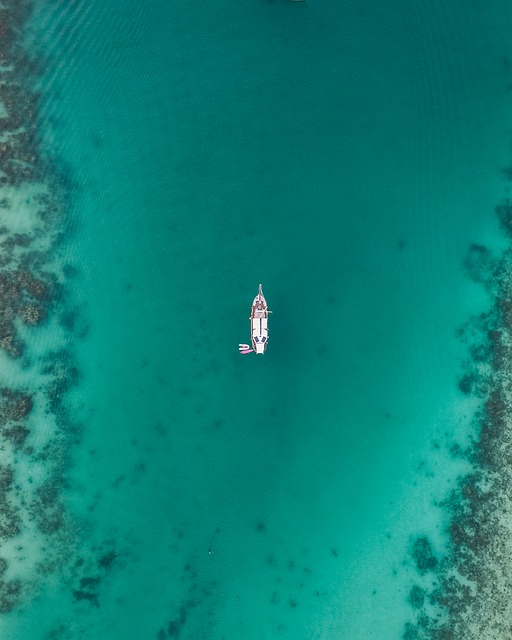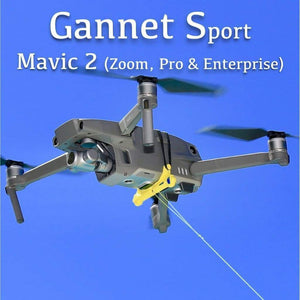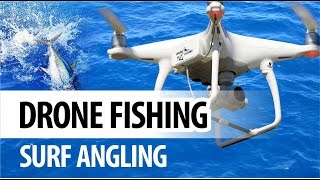
If you're considering using a drone for fishing, you'll likely want to learn more about the regulations. Watch instructional videos about how to fly drones to catch fish. Our article on drone ethics will help you to make informed decisions about your drone use. We will be covering some ethical concerns surrounding the use of drones to fish. Don't forget our guide to drone fishing gear.
Regulations on drone fishing
It is possible to wonder what regulations apply when you are watching a YouTube video of a drone fishing for fish. Although there are many reasons for following local laws, safety remains the primary concern. In order to safeguard both you and your fish's lives, it is crucial to ensure that the right laws are followed. This article will provide information on the most important regulations that must be followed. Remember to adhere to the International Game Fish Association's rules.
Drones can't be flown over public areas, such as stadiums or sporting events. They cannot transport weapons or be within a distance of half a kilometer from a sporting event. In addition, drone operators must have sight of their aerial equipment at all times. Drones cannot fly over public buildings, stadiums, or critical infrastructure. If you aren't sure what the rules are regarding drone fishing, contact your local law enforcement agency or consult an attorney.

While drone law has been adopted in many states, not all states have. Recently, SB 2167 was passed in Illinois. The bill prohibits the operation of drones within state parks without prior permission. It also provides privacy rights as well as outlines the rules and regulations for recreational and commercial drone owners. Finally, it prohibits drones from interfering with hunters and other wildlife. These new laws are expected to be finalized in a few years.
Drone fishing: Ethical concerns
Drone fishing is controversial and not without controversy. Some companies sell underwater robots that can catch fish. The drones' video content often shows the actual fishing process. This is similar to casting your line to catch a fish. However, the process for removing fish from the water can be quite different. Those who are ethically concerned about this type of fishing may want to look elsewhere for their entertainment.
While there are obvious advantages to using drones for fishing, some have argued that they may be cheating the fishing population. The sport of fishing has not changed significantly over the millennia. However, using drones to catch fish could change that and reduce the thrill of it. Drones could also be harmful to conservation. Here are some of the ethical concerns that you should consider before you decide to use a drone for fishing.

Drone fishing isn't the best option. Drone fishing could be dangerous to the environment and can overfish endangered species. Some states allow drones to be used for recreational fishing. Others do not. Drone fishing has its limitations. They must be very expensive. Cheap drones might lack the GPS functionality, lifting capabilities, or control range needed. Drone fishing can also lead to fish loss if there are line tangles. The third issue is piloting.
FAQ
Are Drones Banned Where?
The FAA has prohibited drones from flying close to airports or stadiums, sporting events and nuclear power plants. However, they allow them to fly nightly using GPS technology.
What is it like to travel by drone?
Drones are becoming more and more popular for personal and professional use. They are used for photography, filming, aerial mapping, search & rescue, and other applications. A number of new regulations have been approved by the FAA for drones. These include registration, licensing, pilot training and insurance. These new regulations will ensure drones are safe for all.
What kind batteries does a drone need?
Most drones use lithium-ion batteries. A typical drone uses between 3 and 6 volts.
Do drones fall under the control of the FAA?
The FAA is responsible for all aspects of drone operation, including certification requirements, safety standards, and licensing procedures.
Can you fly a drone high without a licence?
The FAA has no limit on how high you can fly a drone. However, you must register your unmanned aircraft system (UAS), which includes the registration numbers, model name and weight, size, serialnum, manufacturer's name and date manufactured.
Statistics
- According to ZipRecruiter, the minimum hourly wage of drone pilots is $20. (thedroneu.com)
- Research and Markets predict a growth rate of 51.1% over the next five years. (thedroneu.com)
- According to the multiple listing service (MLS), houses and apartments with drone photographs are up to 68 percent more likely to sell than those without pictures. (thedroneu.com)
External Links
How To
How to Fly Drones With Beginners
A drone is an unmanned aerial vehicle that can be remotely controlled and used for surveillance, aerial photography, film production, research, and other hobby purposes. The technology behind drones has been around since World War II. DJI's Phantom series of quadcopters was the first to be commercially used. From beginner-friendly drones such as Parrot AR Drone 2.0 through professional-grade multirotor craft like DJI Mavic Pro, many types have been available.
There are several ways to fly a drone, including;
-
Remote control - This allows you to control the drone from your hand. There are two main types: Joysticks (like a radio), and On/Off switches (like an alarm clock).
-
Manual Control - Using a smartphone app, this method allows users to remotely operate the drone via GPS coordinates. You must keep track of the location where you want the drone to go and follow the instructions from the app.
-
Autonomous Flight - This method involves leaving the piloting duties to the drone itself. It is basically flying autonomously and without human intervention. It must have a builtin camera, sensors capable of taking images and data to enable autonomous flight.
-
Triggered Flight: This is similar in concept to manual control. The pilot manually creates a route and the drone then follows it until it reaches that endpoint. After the preprogrammed route is complete, the drone will automatically land and return to its base.
-
Landing Gear – Some drones are equipped with landing gear, which allows them to safely land if they lose power during flight.
-
Goggles - Some pilots wear goggles to protect themselves from debris while operating.
-
Camera - Some drones can be equipped with cameras which enable you to capture photos from the sky.
-
Obstacles – Some drones have obstacle avoidance systems that stop them from colliding with obstacles.
-
Speed – Some drones can reach speeds in excess of 40 mph.
-
Battery Life - Most drones last between 20 and 3 hours depending on how much power they have.
-
Distance - Some drones can travel up 30 miles depending on the model.
-
Power source: Some drones will require an external power source while others can be powered by internal batteries.
-
Weight - Some drones weigh less than 1 pound, whereas other models weigh up to 4 pounds.
-
Size - Drones can range in size from tiny devices that can fit in your palm to heavy crafts that weigh 50 pounds.
-
Price - High-end drones can go for thousands of dollars, while low-cost models start at $100.